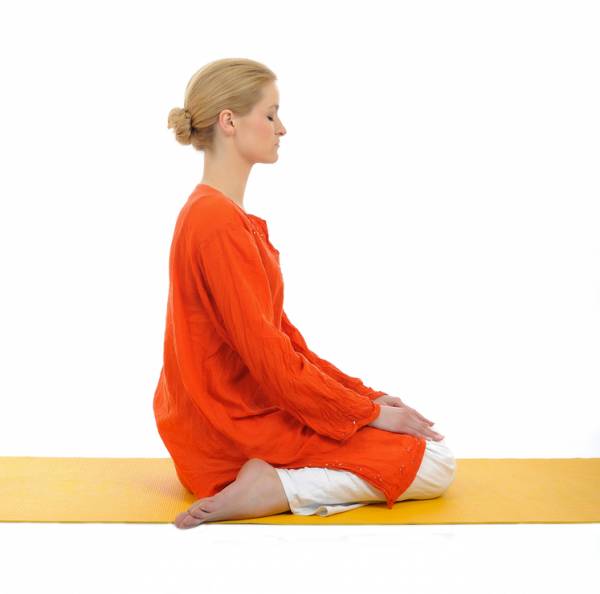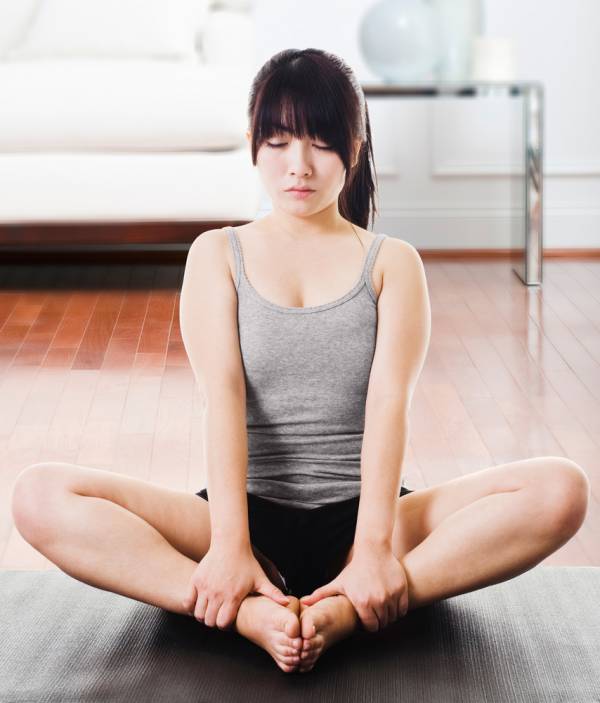“Have you ever thought of trying yoga as part of your training routine?” This is what Anne Cleveland, one of the most accomplished open water swimmers I have had the pleasure to meet, asked me. She went on:
How about as part of your recovery routine, in between your workouts? What if simple breathing practices combined with supported yoga poses helped you recover and be ready to train at a higher level the next day? Restorative yoga will do just that for you, and more.
Anne, a native of the La Jolla-San Diego area, started swimming at an early age, but it wasn’t until well into her forties that she made her mark in the swimming world. Along with many other awards, in 2011 Anne was inducted to the International Marathon Swimming Hall of Fame, being recognized for a number of her notorious winning swims (Maui Channel, Catalina Channel, and English Channel – both one-way and two-way swims).
In addition to swimming, Anne has been an avid yoga practitioner and teacher, specializing in restorative yoga for athletes. Anne practices Hatha yoga. As she explained to me:
Hatha yoga probably originated about four hundred to five hundred years ago and is a combination of asanas (poses) and pranayama (breathing practices). For those who think a strong physical yoga practice is required for results, hatha yoga works at a much more energetic level than physiological level. It has to do with the flow of prana and engages our inner strength. When this happens, our balance improves on all levels: body, mind and spirit. We become strong from within. Our physical and mental stamina increases. We gain a new clarity and confidence as we learn to quiet our busy minds and access the power within. Our mood and ability to sleep improves, as well as our ability to concentrate and focus.
Swimmers are plagued with many common issues that Anne believes yoga can easily address and combat. Here are areas of the body and the poses Anne recommends:
 Feet/Achilles Tendon/Ankle
Feet/Achilles Tendon/Ankle
Because a swimmer’s toes are pointed while swimming, the Achilles tendon can contract over time. Anne suggests that stretching the back of the legs using down dog or malasana (squat pose) can open this back up again. Conversely, triathletes’ ankles become stiff from running and cycling and sitting in virasana (pictured), can help stretch out the front of the ankles.
Shoulders
If there is a key problem area for swimmers, shoulders are it! Rare are the swimmers who have not been plagued with one or multiple shoulder injuries throughout their career. While strengthening the shoulder is usually one of the ways swimmers choose to fight this problem, Anne suggested a different avenue:
Gentle, supported backbends help open the chest area, promoting good posture and helping eliminate pressure on the bicep tendon. Over time, the tendon becomes worn and frayed – a precursor to rotator cuff issues. Doing some backstroke during your swim workout also opens the chest, and works as a “counter pose” to freestyle and the other facedown strokes.
The job of the rhomboids (the muscle between the spine and shoulder blades) is to bring the shoulder blades in toward the spine. “Learning to activate the rhomboids to drive freestyle arm recovery rather than throwing the arm over with the front of the shoulder will also help protect and create space for the bicep tendon,” Anne further advised.
Hip Flexors/Lower Back
 Swimming, running, and cycling can cause the pelvic girdle to become locked and stiff. The psoas (hip flexor) also tightens and because it extends into the lower back it can create restricted movement and lower back pain. To help with this, Anne suggested gentle, supported hip openers, such as baddha konasana (pictured), seated forward bends, and child’s pose, are best to open this part of the body. She cautioned:
Swimming, running, and cycling can cause the pelvic girdle to become locked and stiff. The psoas (hip flexor) also tightens and because it extends into the lower back it can create restricted movement and lower back pain. To help with this, Anne suggested gentle, supported hip openers, such as baddha konasana (pictured), seated forward bends, and child’s pose, are best to open this part of the body. She cautioned:
Care should be taken to properly support the body to create comfort for maximum release of tight spinal muscles. Often, while stretching their joints to increase flexibility, eager practitioners end up with over-stretched hip and shoulder ligaments instead of muscular release. This can lead to other instabilities and issues as the years go by.
For athletes yoga can be a rather foreign concept. As athletes, we are used to “doing” our best and achieving our goals. In a yoga practice, it’s about “being.” Yoga is not a competitive sport. Anne shared from her experience teaching yoga, not only to swimmers but athletes in general:
If I were to point out the biggest mistake I see students make in a yoga class, it’s trying too hard. Don’t worry if you can’t touch your toes; yoga is not about that. The poses are not the main event. If you can breathe, you can do yoga. The subtle practices are the deepest.
Yoga has been called the science of human capacity. The practice of hatha yoga is doing everything possible in our life to ensure that the prana in our system flows smoothly. This is how we access our highest human capacity.
To learn more about Anne Cleveland you can visit her website, annecleveland.com.
Yoga photos courtesy of Shutterstock.






